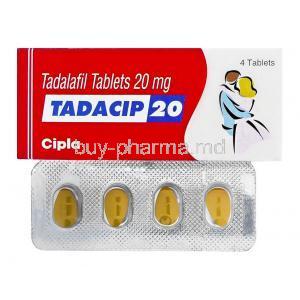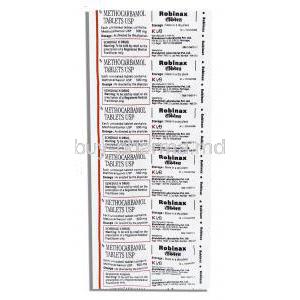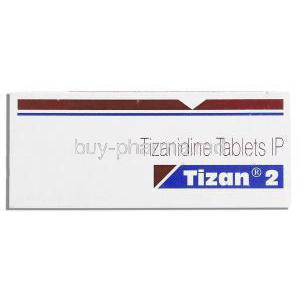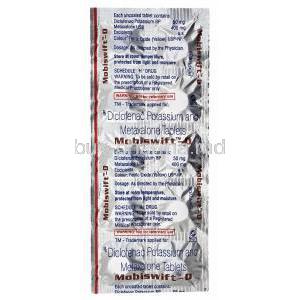Cyclobenzaprine
- I. Introduction
- II. Composition
- III. Uses
- IV. Off-Label Use
- V. How It Works
- VI. Dosage and Administration
- VI. Common Side Effects
- VI. Serious Side Effects and Warnings
- VII. Contraindications
- VIII. Interactions
- IX. Careful Administration
- X. Important Precautions
- XI. Overdosage
- XII. Storage
- XIII. Handling Precautions
I. Introduction
Cyclobenzaprine plays a role as a muscle relaxant mainly used to relieve muscle spasms and related discomfort. Having been in the field for many years, Cyclobenzaprine has proven its effectiveness and versatility. This article aims to provide readers with an overview of Cyclobenzaprine, including its ingredients, various applications, how it works in the body, and important instructions for its use.
II. Composition
Active Ingredients
The key to cyclobenzaprine effectiveness is its component, which works by easing muscle tension and enhancing mobility.
- Generic Name: Cyclobenzaprine
- Chemical Formula: C~20~H~21~N·HCl

III. Uses
Indicated Uses of Cyclobenzaprine
Cyclobenzaprine is a muscle relaxant used to treat skeletal muscle conditions such as pain or injury. It works by blocking nerve impulses sent to the brain. It is typically used in conjunction with rest and physical therapy1.
IV. Off-Label Use
- Beyond its approved uses, Cyclobenzaprine has been investigated for other conditions. While these applications are considered off-label, they may be beneficial in certain cases:
- Pain Management:
- Some studies suggest that Cyclobenzaprine may provide pain relief, especially in conditions where muscle spasm contributes to pain.
- However, evidence supporting its efficacy for pain management is limited.
- Fibromyalgia:
- Fibromyalgia is a chronic pain disorder characterized by widespread musculoskeletal pain, fatigue, and tender points.
- Cyclobenzaprine has been used off-label to manage fibromyalgia symptoms, although its effectiveness remains uncertain.
- Sleep Disorders:
- Due to its sedative properties, Cyclobenzaprine may help improve sleep quality in certain individuals.
- However, it is not a first-line treatment for sleep disorders.
- Neuromuscular Syndromes:
- Some neuromuscular conditions involve excessive muscle spasms or rigidity.
- Cyclobenzaprine may be considered in such cases to reduce muscle spasticity.
- Examples include spasticity associated with spinal cord injury, multiple sclerosis, and cerebral palsy.
- Pain Management:
V. How It Works
Mechanism of Action
Cyclobenzaprine works by affecting the nervous system to create a muscle-relaxing effect without directly affecting the muscle tissue.
Effects on the Central Nervous System
It helps to manage the feeling of pain and lessen muscle spasms by reducing the activity of the central nervous system.
Comparison with Other Muscle Relaxants
When compared to medications that relax muscles, Cyclobenzaprine stands out for its effectiveness and lower likelihood of causing dependency, which is why it is often chosen for short-term therapy.
VI. Dosage and Administration
Recommended Dosage
The standard dosage schedule highlights the significance of customized treatment strategies to meet each patient's unique requirements and medical background.
Dosage Adjustments
- Elderly individuals may need doses to reduce the chances of negative reactions.
- It is crucial to adjust dosages for patients, with kidney or liver issues to avoid buildup and potential harm.
Administration Guidelines
Following the recommended instructions guarantees that the medication works best and reduces the chances of reactions.
Duration of Treatment
It is generally advised to use Cyclobenzaprine for a period, and it is important to closely watch the length of treatment to avoid dependency.
VI. Common Side Effects
List of Common Side Effects
Some patients might feel tired, have a mouth, feel dizzy, or get headaches as some of the common side effects.

Management of Side Effects
Implementing management tactics involves modifying dosages, providing supportive measures, and administering treatments to relieve any discomfort.
VI. Serious Side Effects and Warnings
Serious side effects, though uncommon, require medical care. These may involve heartbeats, intense allergic responses, and worsening of existing health issues.
Warnings for Specific Populations
- Elderly individuals should use medications cautiously due to the likelihood of experiencing side effects requiring careful monitoring.
- For women and nursing mothers it is crucial to balance the potential risks to the fetus or newborn with the treatments benefits.
- In children, there is still a lack of research on the safety and effectiveness of medications in pediatric populations.
VII. Contraindications
Absolute Contraindications
If someone is allergic to Cyclobenzaprine or any of its ingredients, they should avoid taking this medication.
Relative Contraindications
It is important to take into account conditions like glaucoma, urinary retention, and serious heart problems when using Cyclobenzaprine, as caution is necessary in some cases.
VIII. Interactions
Drug-Drug Interactions
When Cyclobenzaprine is taken together with medications that affect the central nervous system, like benzodiazepines or opioids, it can increase drowsiness and breathing difficulties. Combining it with monoamine oxidase inhibitors (MAOIs) may lead to increases in blood pressure, so it's important to carefully check the patient's medication list to prevent harmful effects.
Drug-Food Interactions
During treatment with Cyclobenzaprine, drinking alcohol could make the sedative effects of the medication stronger, affecting motor skills. It is recommended that patients refrain from consuming alcohol and be mindful of grapefruit juice as it has the potential to change the medication's plasma levels, causing outcomes.
Drug-Disease Interactions
People who have had heart rhythm issues, thyroid problems, or difficulty urinating should be careful when using Cyclobenzaprine. This medication can make these conditions worse, highlighting the need for a review of one's medical history before starting treatment.
IX. Careful Administration
Administration to Elderly
Older individuals might show sensitivity to Cyclobenzaprine, leading to a greater chance of experiencing side effects, like confusion and hallucinations. It is advisable to begin with a dose and closely monitor them to reduce these potential risks.
Administration to Pregnant Women and Nursing Mothers
Based on the research available regarding the impact of Cyclobenzaprine on pregnancy and breastfeeding, it is advised to consider using it only if the expected advantages outweigh any possible risks to the baby.
Administration to Children
The safety and effectiveness of Cyclobenzaprine in children have not been confirmed, It's important to proceed with caution and carefully weigh the risks and benefits before prescribing this medication.
X. Important Precautions
Precautionary Measures
Patients need to be told about the possibility of feeling sleepy and cautioned against operating machinery or driving until they know how Cyclobenzaprine impacts them. It's also important to make individuals aware of the dangers of the syndrome when combining it with other serotonergic medications.
Monitoring and Follow-up
It's important to keep up with your follow-up appointments to check how well the treatment is working, watch out for any reactions, and make changes to the dosage if needed. These visits also help remind patients about safety measures and make sure they're sticking to their treatment plan.
XI. Overdosage
Signs and Symptoms of Overdose
Taking much Cyclobenzaprine can lead to strong sleepiness, rapid heartbeat shaking, or a dangerous rise in blood pressure. In some situations, it could even result in unconsciousness and breathing difficulties.

Management of Overdose
In case of an overdose, prompt medical attention is necessary. The treatment involves providing care such as ensuring proper breathing, monitoring heart rhythm, and potentially giving activated charcoal within the initial hour of ingestion to minimize absorption.
XII. Storage
Storage Conditions
It's best to keep Cyclobenzaprine at room temperature shielded from light and moisture to maintain its effectiveness and avoid deterioration.
Shelf Life
The expiration date for Cyclobenzaprine is usually indicated on the packaging. Its important to follow these dates to guarantee the safety and efficacy of the medication.
Disposal Guidelines
Properly get rid of any leftover or outdated Cyclobenzaprine by following rules, usually by returning it to a pharmacy program to avoid misuse and harm to the environment.
XIII. Handling Precautions
Safe Handling Practices
Healthcare providers and individuals should be cautious when dealing with Cyclobenzaprine, making sure to store the medication in a place away from children and pets to avoid accidental ingestion.
Accident Prevention
Effective communication regarding the dosage and schedule for taking medication can help prevent accidental overdose. Furthermore, ensuring that medications are correctly labeled and stored can lower the chances of confusion or mistakes, ultimately protecting the well-being of patients.












